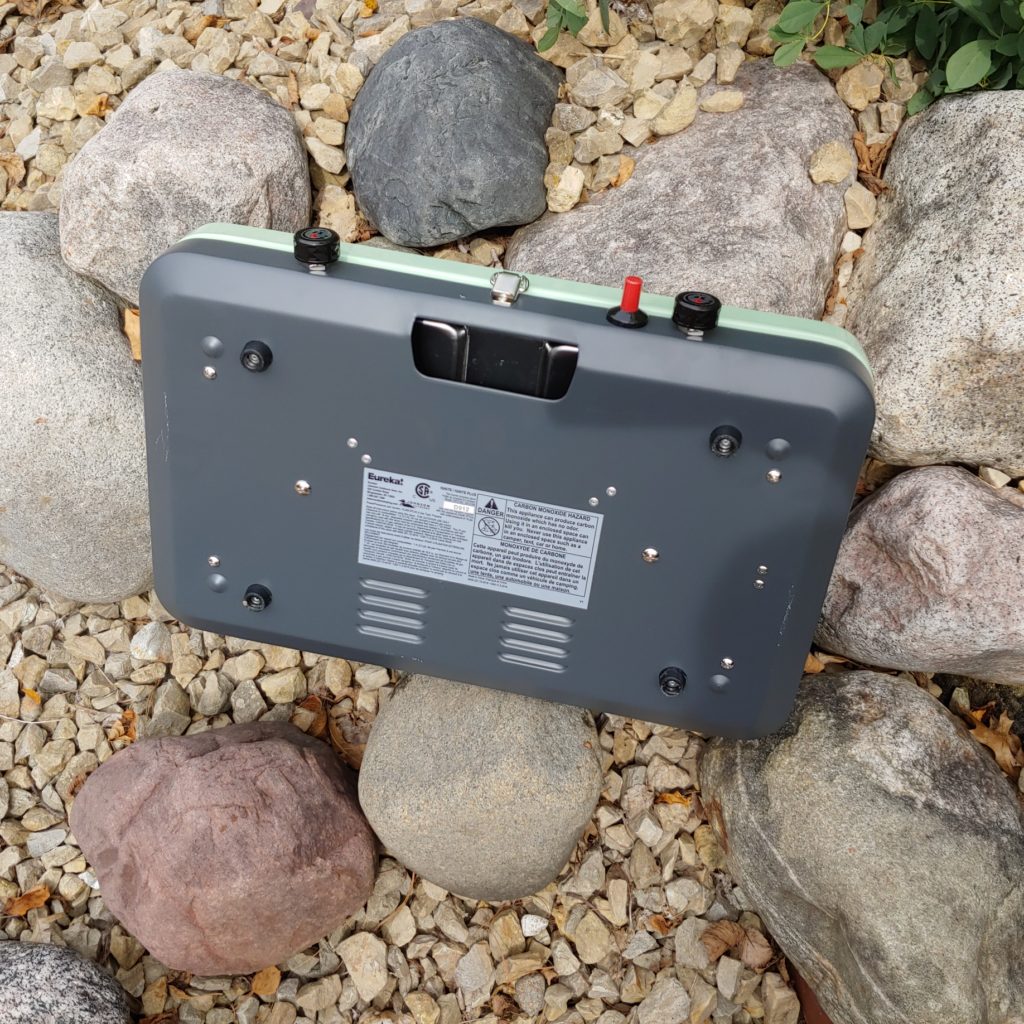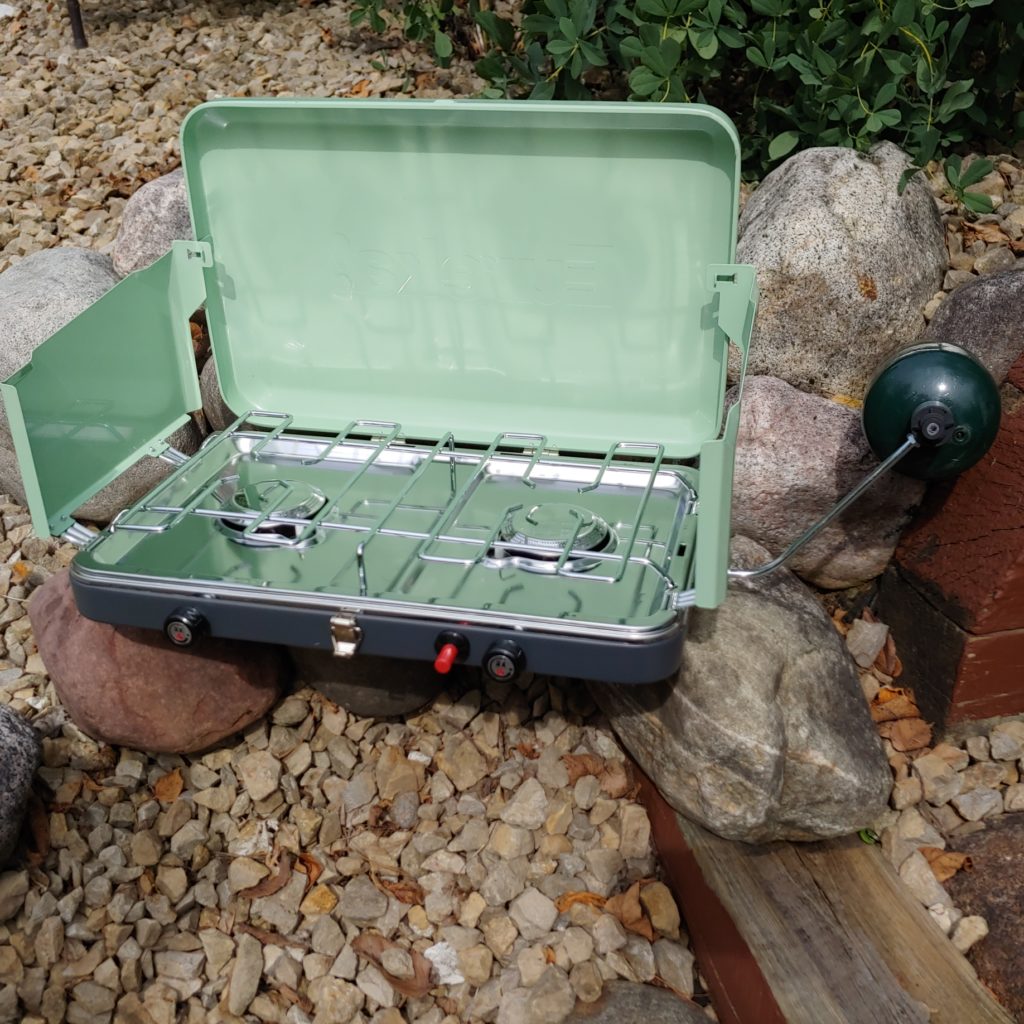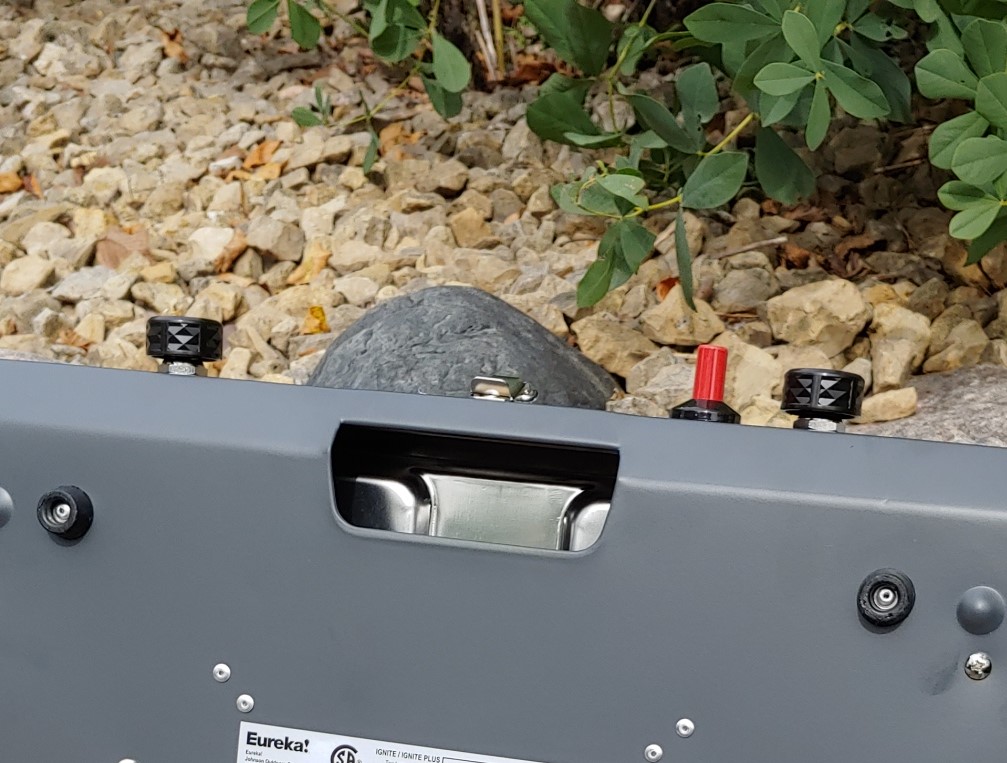For a leisurely day in the park or a nice picnic I do not need the latest, featherweight, whiz-bang camp stove – but I do need to eat. When I can justify the added weight and space, and have three or four (or six) people to cook for, the Eureka Ignite stove ($99.95) delivers a lot of capability in a reasonably compact package. As the day winds down, and my friends break out the beverage of their choice and gather about the campfire, I can whip up a culinary masterpiece and make the evening memorable.
It seems to me that companies founded more than a few years ago seem eager to boast about their “years of experience.” Eureka! gets to use a different quote. They were founded “sometime before 1895.” To me that is a bit like a youngster at the campfire bragging about their adventures, while a grizzled, old guide sits with a little smile saying nothing.
Most of us can identify which of them is legit. Eureka traces its lineage to a time before a single person had stepped foot on the north pole, the first automobile race was held, or X-rays were discovered. The company has earned a reputation for producing high-quality gear over its long history and that continues to the present day. That kind of regard is hard to earn and easy to lose. Eureka! products can be found in places like Mount Everest, Boy Scout camps across the nation, and being used by forward deployed U.S. Marines in Afghanistan and Iraq. Need I say more?
What I liked
Solid Materials
The bulk of the Eureka Ignite stove is constructed from a robust gauge of steel which balances weight and strength very well. The lid, wind-guards, and base are painted, and all the cooking surfaces are stainless steel which offers a durable, corrosion resistant material. The knobs, igniter, and gas tube all give the feel of quality. On the bottom of the stove is a nice recess to carry the stove conveniently when it is folded up. The fit and finish of all the parts is excellent. There is really no weak link anywhere in the construction of the stove.

Size
The footprint of the Ignite is 18.5” x 12.8” and it stands 4” tall. It weighs in at 10 lbs (without the fuel canister). The cook top fits 9” pans nicely, and 10” pans adequately – though it can feel a bit tight. [If you want more room, the Eureka Ignite Plus ($134.95) can handle two 12” pans.]
The size and weight paired with the rubber feet on the bottom keep the stove stable. However, a flat, level surface such as a table is really the only reasonable place to use the Ignite safely. The spot does not need to be perfectly flat but that is just fine. This is clearly not the kind of stove anyone in their right mind would try to lug up a mountainside.

Operation
Setting up the Eureka Ignite stove is a snap. Once the latch is released, the top and sides lift up and mate together to keep the cooking area shielded from the wind. A push-button igniter on the face lights the stove with exceptional reliability. Though it is unlikely that I will use this stove in inclement weather, I sprayed the stove with water to see if it would still light and the igniter never failed.
Perhaps the best designed feature of the Eureka Ignite is the fine degree of flame control. To go from off to inferno takes two full turns of the knobs. The heat transitions smoothly throughout the range of adjustment so there are no surprise jumps. That is an important and appreciated feature on any cooking appliance. One thing to keep in mind is that – even at the highest setting, the flames are virtually invisible.

Performance
The Eureka Ignite stove is equipped to accept a standard 1lb propane tank (1″-20 fitting) which will purportedly run the stove for 90 minutes. Eureka offers an optional hose to connect a 20lb propane tank (if you need to cook something for 30 hours, I guess). In addition, the Ignite is compatible with “JetLink” which allows interconnection between other (select) Eureka and JetBoil stoves. I have not used that feature and cannot speak to whether it works or not, but I like modularity.
Color
You can get the stove in any color you want as long as it is “Quiet Green,” the only option available. This is fairly standard for this class of stove (I looked briefly at other manufacturers and did not find any that had color options). I happen to like the color. It has a nice retro feel to it, but Eureka made an interesting choice here. I might change my mind about the color in a decade. That said, I care more that the stove can still function in a decade.
What I did not like/What could be better
Knobs
I am unsure about who designed this category of stove first, but the knob and igniter placement seem nearly universal. They hang off the front and just beg to get banged around. No real attempt to change the design for the better seems to have taken place by any of the manufacturers. That might mean that my concern is unwarranted, but I still think it would be nice if the knobs were not as vulnerable.

Gas Tube
The gas tube that connects to the fuel canister does not have any way that I can discern to neatly stow away once the stove is closed up for storage. I was perplexed by that for a bit because everything else on the stove seemed so thoughtfully put together. Some way to store the gas tube would be nice and would eliminate the possibility of misplacing it.
Feet
A method of of leveling the stove would add a lot of capability. For example, adjustable feet would only add a modest cost to the manufacturing, but would make the stove safer to use. Little thing, but it would be nice.
Some thoughts on LP as a fuel
When it comes to selecting a fuel, liquid propane, or LP (C3H8), is tough to beat. At 84,250 Btu/gal, it has 73% of the energy density of an equivalent amount of petrol/gasoline (BTU/kg), but produces fewer harmful emissions into our precious environment. If it is accidentally spilled, it simply evaporates instead of polluting the surrounding ground and water.
Though it is a petroleum distillate, LP is arguably one of the lowest impact fuels available and will probably remain that way. In most cases, when evaluated on a full life-cycle basis, it is less impactful and more efficient than almost any other form of energy – including electric. (A sad reality is that, until fusion power-generation, superconductors, and storage technologies are on the market the bulk of the world’s electricity will come from hydrocarbons.)
In the near future, LP may even become carbon-neutral if these folks ever get biological production nailed down. The bottom line is that the only current way to have a smaller carbon footprint than LP is to use a solar oven, cook over a volcano, or eat all of your food raw. Let’s all hope that changes soon.
Bottom Line
The Eureka Ignite is a well built stove and, for what you get, sold at what I think is a competitive price. There are a lot of options when it comes to camp stoves, but when it comes to selecting one, this is one solid contender to consider.

